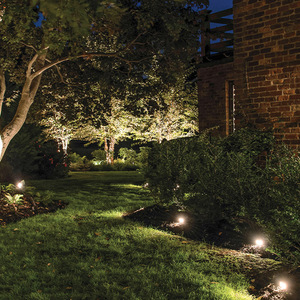i’m building a pergola using four 6×10 douglas fir beams to define the perimeter. i’ve dressed them to abt. 5 1/2″x 9 5/8″. the beams interlock and overlap completely. that is, each beam is notched halfway thru the height so that the overlapping beam interlocks completely to form a flush surface. my concern is movement of the wood. i want to notch to create a snug fit, but i don’t want the wood splitting with expansion. as each beam is only restrained at two points is this really an issue? the joints are not glued or screwed. any reccomendations?
Discussion Forum
Discussion Forum
Up Next
Video Shorts
Featured Story

Smart construction decisions and material choices can significantly improve occupant safety and survival in the event of a fire in the home.
Highlights
"I have learned so much thanks to the searchable articles on the FHB website. I can confidently say that I expect to be a life-long subscriber." - M.K.
Fine Homebuilding Magazine
- Home Group
- Antique Trader
- Arts & Crafts Homes
- Bank Note Reporter
- Cabin Life
- Cuisine at Home
- Fine Gardening
- Fine Woodworking
- Green Building Advisor
- Garden Gate
- Horticulture
- Keep Craft Alive
- Log Home Living
- Military Trader/Vehicles
- Numismatic News
- Numismaster
- Old Cars Weekly
- Old House Journal
- Period Homes
- Popular Woodworking
- Script
- ShopNotes
- Sports Collectors Digest
- Threads
- Timber Home Living
- Traditional Building
- Woodsmith
- World Coin News
- Writer's Digest


















Replies
View Image View Image somethings to ponder
View Image
thanks jagwah; appreciate your response.
nice detail; took a look at their site: most interesting; they do good work. didn't see what was applicable to my concern but i will search timber framing to see if i can. i'm attaching a couple of sketches to show what i'm doing and the joint i'm concerned with.
I misunderstood your conection. I understand your point. I don't feel it's as big a problem as you might think. But that said smarter heads here might have more experience with the wood movement issue.
This being open to the elements, a top flashing soldered together so water can't migrate into the joint wold help a lot.
i think flashing is a good idea and i have been considering adding it on.
thanks for your input.
You do have a legitimate concern, if the joint is tight and the wood gets wet and expands you could crack a horn off (since the joint is close to the ends).
If the Doug-fir is relatively stable and if it is tight-grained, all the better.
It would not hurt to allow a 1/16" of "slop" for expansion (especially if your wood is dry). This would be just 1/32" on each side if centered.
If the wood is not kiln dried, it could be assembled tight and in a few months, will make its' own gaps.
I've done this a few times, this is my nicest http://woodsshop.com/Japanese_shade_structure.htm I've always used fairly well seasoned wr cedar or redwood, choosing FOH stock. Doug fir can be pretty lively outdoors, but go ahead and cut your joints fairly tight, then pre seal/stain it all (especially the end grain) before installation.http://woodsshop.com/
"choosing FOH stock"Never heard the term FOH..
.
A-holes. Hey every group has to have one. And I have been elected to be the one. I should make that my tagline.
Free Of Heart=FOH
They can't get your Goat if you don't tell them where it is hidden.
I think it is actually FOHC "free of heart center" just "free of heart" would be incorrect, as heart wood is fine, but the point is to avoid the pith (the very center).Edit to add:This is what I found: As lumber goes through cycles of alternate wetting and drying, the wood swells and shrinks twice as much along each growth ring as it does across growth rings. Internal stresses build up, making the board warp and twist.This problem becomes severe in boards containing heart centers. Since these boards usually contain complete circles of growth rings, the expansion of the rings is constrained in a circumferential direction—the swelling has no place to go. Internal stresses in the rings have no opportunity to be relieved nondestructively. So, stress relief occurs in the form of excessive distortions which greatly reduce the load carrying capacity of the board.These same stresses in boxed heart members may also relieve themselves in the form of cracks and splits—usually on the face closest to the heart center. These openings in the treated surface offer pathways for fungal attack on the untreated interior wood, leading to premature decay.By contrast, FOHC lumber contains only incomplete growth rings which have two free surfaces where stress relief can occur. The result is decreased warpage, decreased twisting and increased load bearing capacity—a superior construction material. Boxed Heart Lumber This describes pieces sawn at the mill with the heart center included in the board. Free of Heart Center(FOHC) Lumber This includes only those pieces sawn at the mill to eliminate the heart center material.
Edited 8/22/2008 10:29 pm ET by basswood
Thanks.Yes, you don't want it free of heart wood as that is the part that is rot resistant..
.
A-holes. Hey every group has to have one. And I have been elected to be the one. I should make that my tagline.
An exception is PT lumber, in which case, sapwood absorbs treatment better and actually becomes more decay resistant than treated heartwood from the same tree.
Edited 8/22/2008 10:45 pm ET by basswood
Excellent knowledge of the material Brian. How did you learn about it?
I became interested in wood science while earning a forestry degree at Colorado State, the stuff in the second post I made in this thread (on FOHC)--after the edit note-- I lifted from a paper I found online about selecting lumber for wood cooling towers.
Impressive. I once worked with a guy who trained in Japan & would talk about wood selection based on how it grew & what part of the tree it was from. Was always interested but never learned enough to put it to use.
In college I mostly learned how to grow and harvest trees...now I enjoy putting them to use. ;o)
your info is overwelming the few neutrons i have left, but it is appreciated. i am sure i will reread your comments a few times.
the douglas fir started off as a rough & wet structural grade timber. i let it dryout for a few weeks and then planed it. the 10" faces i could run thru the thickness planer (except one which was warped and required flattening before it would go), but the other faces- and the flattening- were hand planed. stress cracks have developed- all in the 10" faces, as the 6" faces are edge grain. as you have indicated the wood appears to be FOHC, and so though cracks have developed, they are primarily surface and do not run deep.
i think your comments are probably fair enough. the timbers are basically air dried and fairly close grained. they have worked in drying, and are probably relatively stable now. a small clearance won't be noticed and as the joints are not pinned, they can move as needed.
thanks
your work is very sweet. i'm impressed: i think i will bookmark your site.
i chose the douglas fir from a cost standpoint and because i don't think the available western cedar is much more rot resistant, unless it's heartwood, which is very difficult and very expensive to obtain today. i was not aware of the stress considerations "basswood" has pointed out with heartwood, but well said. i think fir can stand up as well as most woods outdoors, as long as it's not contacting the dirt (and not many woods can effectively), and there is good air circulation along with good drainage. being an open roof frame, it seemed a good application.
any significant cracks in the timbers are being sealed with a cold cure epoxy, and the intention is to seal the timbers with deks ole - it's the unopened remains of a sealer i used years ago on the teak decks of a fine old sailboat.
so i appreciate your comments and i will continue with a fairly close tolerance on the joints.
i like your use of bamboo as shading. i've seen it often used in japan, but infrequently here. i thought of using it on this project, but have not been happy with the quality of local inventory: usually small diameter, and often split. but after looking at your site, perhaps i'll have another hunt around.
and by the way, is it common for you to have customers willing to pay for screwed and plugged patio decks. it's beautiful, but i thought plugged decks was reserved for the realms of finer boats. i'm envious.
Why not kerf the top to relief radial stress checking, caulk the kerf and cap flash it?
Jeff
thanks for the comment jeff;
that could be a good idea. the potential stress is only in one direction at each joint, and a kerf cut into the top - or bottom as applicable - at the joint would provide a line of relief. i have been thinking of cap flashing, and from the bottom - the posts would hide the kerf.
Man I've been calling it FOH for so long, but from here on out it'll be FOHC as it should be.Yeah the bamboo makes some pretty nice shade, and lasts for over 5 years down here. Only problem is I have to order it from China now and it takes 7 weeks to get here! You want small diameter canes, less apt to split.I wouldn't do a surface screwed deck so always price them plugged. Don't trust any of the concealed fasteners either, not for ipe anyway.A bigfoot makes those cuts easy :-)http://woodsshop.com/